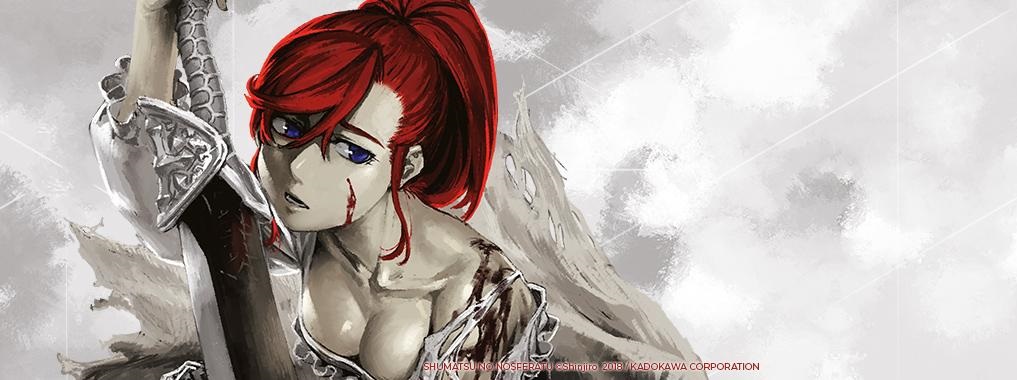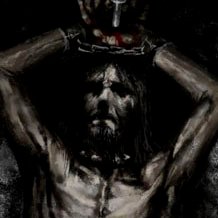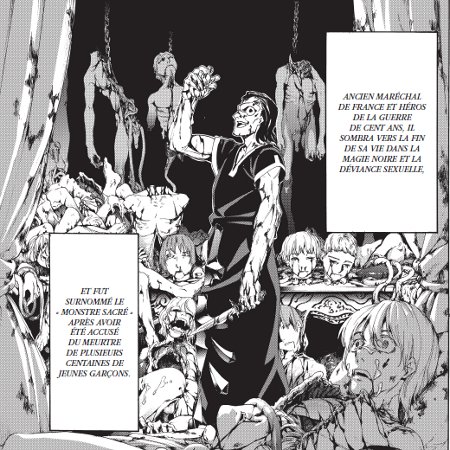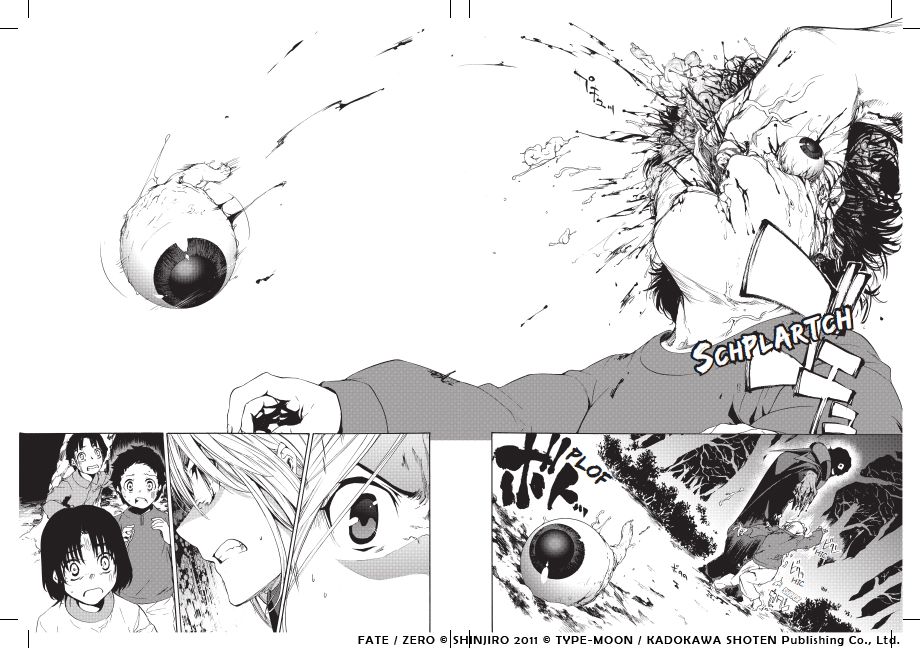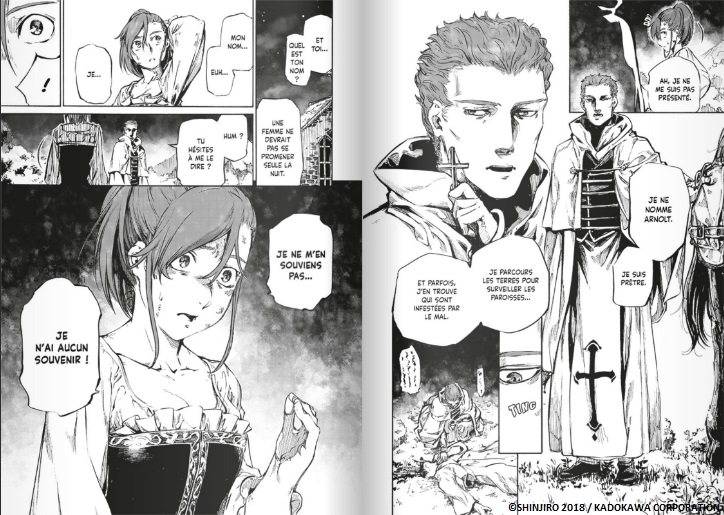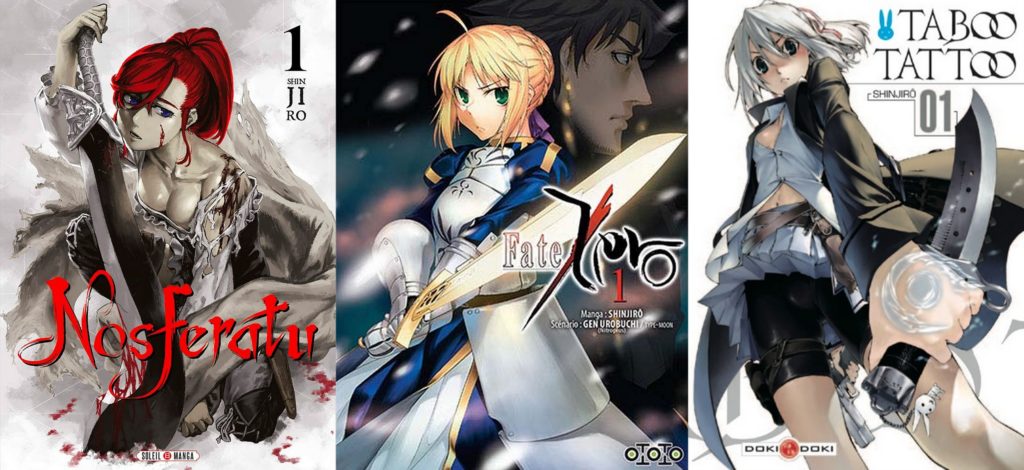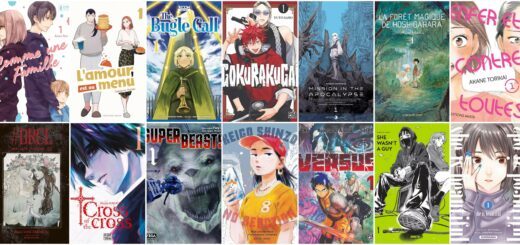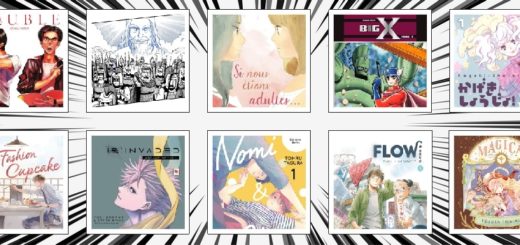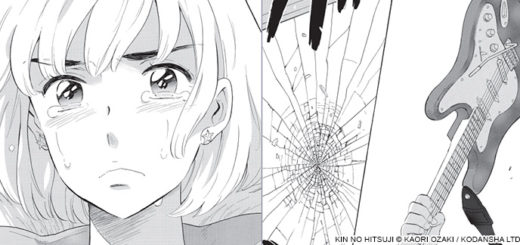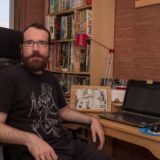Interview: SHINJIRÔ, the mangaka who witnessed evil
We had the chance to meet a mangaka who is best known for his high-quality artwork : SHINJIRÔ. The interview allowed us to commemorate his third French-publication with different editorials. He was introduced to the french audience in 2011 through Doki-Doki with the series Taboo Tattoo and continued shining with the brave adaptation of an arc that belongs to the Fate saga, also known as Fate/Zero with the editorial Ototo. As well, Soleil Manga editions published Nosferatu, a short four volume series that brought us closer to the dark side of the artist, his passion for horror cinema, criminal psychology and revenge stories which allow him to depict dark souls and bruised bodies on a human way…
But enough chit-chat, let’s go straight to the interview !
Trigger warning: some images in this interview contain gore (violence) and may not be suitable for every reader !
First published in french on February 6th 2021
The Mangaka’s roots: genre cinema and criminal psychology
Journal du Japon : Hello SHINJIRO, thank you for taking the time to join us… First of all, for those who don’t know your work or know very little, a small introduction: what was your first approach to manga and the memories that surround it?
SHINJIRÔ: My memories are somewhat blurry, but I believe the first manga I rea
d was Patalliro! by Mineo MAYA. When I was seven or eight years old and came home from school, around 3 pm, the anime adaptation was on tv and the storyline was easy to follow even for the little kid I was, so I watched it every day. That led me to read the manga. It had plenty of romantic scenes between male characters, but I didn’t really understand what they meant at the time. That type of content in anime or manga was confusing and made me wonder what they were doing. Some years later, I was really surprised when I figured it out!
How did you choose your profession, what was the motivation behind?When I was little, I loved to draw and practiced a lot, but it was just a hobby for me. Back then, I planned to study biology at university.
Nonetheless, I wanted to improve my art skills and I began taking lessons at a drawing school aside from my normal classes. Eventually, I became absolutely hooked with art and decided to dedicate my life to this profession. I didn’t plan on becoming a mangaka; in fact, I had never drawn manga before. I made a living by publishing illustrations on-line and they caught the attention of an editor who asked me if I was interested in drawing manga.
You may know this already, but without being affiliated to a company it’s not easy to make a living by drawing, one must be aware of the instability that comes with a freelancer’s income. In a mangaka’s case the logical approach is to be published by a magazine and, if everything goes smoothly, you may have a stable income that can last for a year or so. It’s not that great of a plan but it motivated me to become a mangaka.
When we read Nosferatu or even your work with Fate/Zero we notice an attraction with dark stories and characters, what are your favorite authors or titles that have inspired your style?
I believe that my drawing style is highly influenced by cinema. I love horror films and have watched them religiously, going from famous blockbusters to low-budget films. One of my favorites is Braindead by Peter Jackson, that’s the film that introduced me to the world of gore. Horror film protagonists rarely make it alive, in most cases they confront serial killers or paranormal phenomenon; we could say that they never stood a chance. After being so invested in this kind of stories, I realized that it wasn’t that big of a deal if my characters didn’t survive and if they were in a cruel scenario, it was my mission to make sure it was horrifying.
You have an unmatched talent with drawing sadistic and torture scenes… let’s discuss Gilles de Ray, a historical character who has been labeled as one of the oldest serial killers (of children) ever known: how do you approach that type of character and him in particular?
That’s a tough question… In order to draw serial killers like Ryunosuke Uryu or Gilles de Ray I read many books about criminal psychology. However, in the Fate/Zero universe these two characters are clearly represented as the incarnation of true evil and it’s imperative to make them as accurate as possible, as crazy as they are, so the reader can understand and identify them as the enemy. It’s not their tendencies as serial killers that defines their behavior but the role that have within the plot.
(IMAGE TRANSLATION… Ancient French Marshall and a Hero of the hundred years war, he fades into the end of his life, black magic, and sexual deviations, he earned the nickname “Holy monster” after being accused of the death of hundreds of young boys)
If I get the chance, I would love to depart from such stereotypes and draw a serial killer from a deeper perspective that analyzes their psyche (even if it’s extremely difficult)
Your boards and drawings are full of details, would you care to tell us more about your work process, your tools, methods, or the duration of each stage of the process?
I begin by drawing a sketch and then re-draw it with pen. Since I’ve had tendonitis in the past, I try not to put too much pressure on the pen. For instance, I cannot draw anything other than fine lines, so I modify the thickness of the lines when I move on to a brush pen. To me, a brush pen is a must-have drawing instrument, I use it quite a lot. Next, I begin with decorations which I also do by hand before scanning them and add frames to work on the drawings on the computer.
Nosferatu is a special case, it was difficult to capture the slow passing of time and the somber side of the Middle Ages, so I used a felt tipped pen to trace the main lines and a ball-point pen for the finishing touches. As well, I worked on the PC with a watercolor brush to create gray details.
Within Fate/ Zero we also meet Kariya Matô. He has a gentle side to him but the brutality he committed is just as unbearable and his story includes images that you cannot forget… On the first volume of Nosferatu we are introduced to the surroundings of an evisceration fanatic… In general, how did you manage to build such crude scenes and foul characters, what was the role you wanted to give them?
First of all, I would like to clarify that I didn’t invent Kariya Mato, he is a character from the original tale. I have nothing to do with the development of the character; having said that, I did draw the abuse he endured. But I do not consider that to be a limitation for the genre or the character, the most important thing for me is to draw whatever I want. I believe that to be as well a representation of the hidden things about humanity like war, crime, sickness, death, even about the dark side of human relationships and society.
Do you have any limits for that type of scene?
I abide by the limitations of the magazine that’s going to publish, but asides from that, I don’t have any limits.
Nosferatu by Shinjiro: a curse more powerful than evil
“Synopsis: Trying to understand the mysterious Nosferatus, a small group goes to the “Nosferatu’s country”, along the way they encounter missionaries from the clergy.
They start to give Laura a hard time until another Nosferatu gets in the way. Through several encounters with the self-named king Nicolai, also known as Elein, who has information about her past and Tom Archie, the wise mean from East, Laura begins to understand the meaning of her existence…”
Let’s go back to Nosferatu. How did this project begin?
I have mentioned it in one of the backsides of the volumes, but it was an advice given to me by the editor in chief in Taboo Tattoo that drew me to the project. He told me that vampire series, or other immortal beings, were really popular in foreign countries, so I decided that the next series I would draw should have something to do with that theme.
Honestly, I didn’t find the “traditional vampire” to be that interesting to portray, so I decided to approach the character from a biological perspective. I wanted to eliminate the supernatural look of the character in order to immerse him in a realistic universe. When discussing it, I pictured the vampire as a parasite that needed hosts to multiply himself and that’s how Nosferatu came to be.
(IMAGE translation. Oh, I haven’t introduced myself yet. My name isn’t Arnolt. I’m Pretre. I travel the earth to watch over the parishes… and sometimes, I found some that have been infected by evil. And you... what’s your name? A lady shouldn’t walk by herself at nighttime. My name, well, I… Huh? You don’t want to tell me? I don’t remember… I have no memories...)
Nosferatu is a character that has been portrayed in literature plenty of times. What were the sources of inspiration to create your own version and what type of Nosferatu do you wanted to depict?
In order to create Nosferatu, I began to go through many works involving vampires, but it was Camilla by Sheridan Le Fanu which became the main source of my inspiration. Naturally, I had already seen and read quite a lot of vampire stories, but that particular tale influenced me the most.
I wanted Nosferatu to be a piercing creature but also a pathetic one. I wanted to remove the stereotype of the “evil creature that wants to hurt everyone that surrounds them” in order to create a being that’s more “isolated and prosecuted because he damaged those around him by accident”, that way I could include the hedgehog dilemma clearly within the story. As well, the fact that the main character is immortal and has lost her memory blocks her from understanding her identity. If Nosferatus make an alliance, they would be powerful enough to destroy the world but they don’t realize it since they try to be idealistic. Through this manga, I wanted to create a story about the search for a path that we believe to be fair despite struggling with our own doubts.
Between Gilles de Ray from Fate/Zero and Nosferatu it seems that your style complements really well the Middle-Age period and its stories, what do you like about that time-period?
Many fantasy stories where characters use magic take place during the Middle-Ages and I’m very fond of some elements of such tales; however, I never wanted to draw a fantasy manga with supernatural elements that is set on the Middle-Ages. From that perspective, I made the choice of designing Nosferatu in a realistic, middle-age world, which was really difficult for someone who thinks very differently from people in that age, like myself. In fact, most modern scientific concepts had not even appeared back then; when someone got sick the only option was to pray to God, every single moment of life was overruled by religious principles. Unlike our present, it was an absurd and depressing world to live in. However, the emergent chaos of such absurdity and the order they tried to maintain create balance and I realized that it would allow me to create a story with free will.
Finally, in hindsight of the three works of your creation which available in France: Taboo Tattoo and Nosferatu are original pieces while Fate/Zero is more like a commissioned work… You like both types of jobs the same? In each case, which one do you prefer and which one represents a bigger challenge?
If I had to choose between doing original artworks or commissioned pieces, I would definitely choose the original ones. That way I’m free to draw whatever I want. Nonetheless, drawing your own story is incredibly difficult in the same way that giving birth is oftentimes painful…
In cases like Fate/Zero where the original piece was known worldwide, I couldn’t ignore the fans of the series, after all, I wanted them to enjoy my adaptation. Hence, I strived to make my style as discreet as possible in order to make a faithful adaption. Not having complete creative freedom wasn’t a problem, by having the structure of the original series as a base, including a storyline and dialogues I actually learned so much. It was a positive experience.
After Gilles de Rey and Nosferatu, are there any other famous characters, either historical figures or fictional ones, that you want to draw?
I really like revenge stories so I would absolutely like to draw the Count of Monte Cristo.
We will happily read it!
On the meantime, you can find the first two volumes of Nosferatu with Soleil Manga editions in their stores or read an extract here to catch up before the release of the third volume in April. As well, you can follow Shinjiro’s twitter (in Japanese) or discover or get to know him through his work: Taboo Tattoo (with Doki-Doki, but it stopped being sold after 2019, so good luck) and Fate/Zero (a treasure from Ototo, which you can find here).
Our gratitude goes out to SHINJIRO for taking the time to do this interview and Soleil Manga editions for making it possible. Thanks to Jean-Baptiste Bondis for the japanese – french translation.
English translation by Lourdes Núñez

